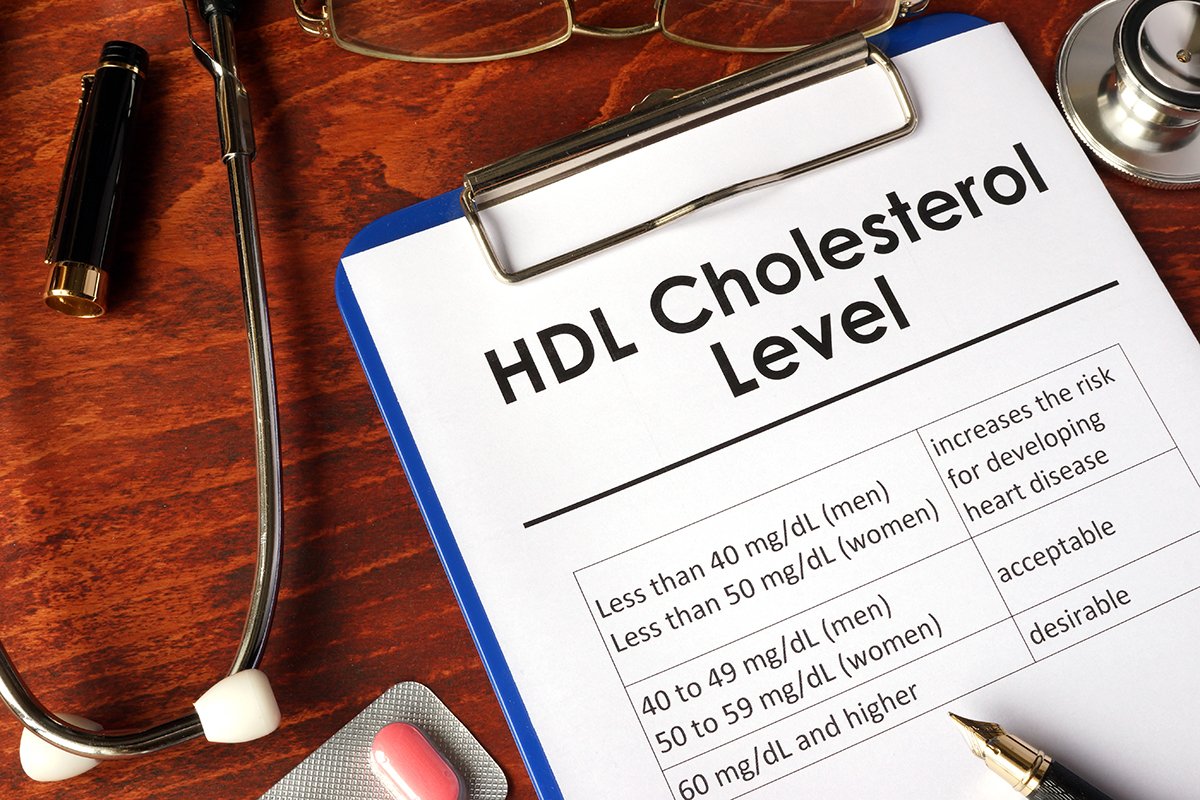
Cholesterol has long been portrayed as a negative health trait (low-density lipoproteins or LDL), but our bodies do need a certain amount of good cholesterol (high-density lipoproteins or HDL) to function properly. Having higher HDL (60+) can help prevent heart disease.
Increasing your good cholesterol levels (HDL) requires a combination of lifestyle (adding exercise) and dietary changes (eating less processed foods). Here are 10 more ways you can increase your HDL levels…
1. Choose The Right Fats
Old fad diets caution against eating any fats at all. But the reality is, there are certain fats which our bodies need to increase our HDL levels. Some of the healthy fats you should include in your diet are:
- Oil (coconut and olive oil)
- Nuts
- Fish
- Avocado
2. Focus On Complex Carbs, Not Simple Carbs
Let’s face it, most of us love simple carbs like bread, baked goods, pasta, boxed cereal, crackers, and more. While these foods aren’t toxic for our bodies, overeating them can be. These types of foods are not adding to our HDL levels.
Instead, focus on using complex carbs in your daily diet paired with healthy fats. Foods like barley, soybeans, legumes, spaghetti squash, leafy greens, and more all are great complex carbs which will help you feel full and raise your HDL levels.
3. Drop Excess Weight
For every pound of fat you lose, you can experience a 1% rise in your good cholesterol levels. This doesn’t mean you need to fixate on a number on the scale. Instead, we recommend you rely on body fat measurements to gain a more accurate idea of fat loss to know how your good cholesterol is being affected.
4. Trade Flab For Muscle
It is not enough to simply lose weight, you need to build muscle. By trading fat for muscle, you can increase your metabolism, as muscle requires more fuel to work than the more passive fat stores. Also, natural muscle building can boost cardiovascular health, helping to raise good cholesterol levels.
5. Exercise Regularly
Along with its ability to help you lose weight and build muscle, exercise on its own helps boost HDL levels. Low-intensity activities like yoga and casual walking do not have as significant an effect as high-intensity exercises.
Running is one of the easiest and best high-intensity exercises. To make your running more convenient and challenge your body more, you may want to pick up a ProForm treadmill using a 2018 ProForm promo code.
6. Add More Fiber
Foods high in dietary fiber have been found to help increase good cholesterol levels. Fiber also has the added effect of helping people feel fuller longer and allowing food to pass more easily through the digestive system.
7. Include Vitamin B3
You can increase your HDL levels by as much as 20% by making sure you take vitamin B3, also called niacin. For adult men and women, 14-16 milligrams a day is recommended. You should not exceed 35 milligrams.
8. Moderate Alcohol Intake
Many kinds of alcohol contain plant sterols, which combines with bad cholesterol to help remove it from your body. However, the sugars in mixed drinks and cocktails often outweigh the benefits.
Dark beer and red wine are best to help deliver plant sterols with low amounts of sugar. Naturally, you should moderate your intake of alcoholic beverages, with one drink a day recommended for women and two drinks a day recommended for men. Also, grape juice with low sugar concentrate can deliver similar benefits to red wine.
9. Cut Out Nicotine
Cigarettes smoking has been linked to the lowering of good cholesterol, as smoking actively suppresses good cholesterol. Once you quit smoking, your good cholesterol can rise again.
Other nicotine products have also been loosely linked to the suppression of good cholesterol. While the studies are still conflicted on exactly how much other nicotine products like e-cigarettes, chewing tobacco, nicotine gum and other products have on cholesterol, it is best to reduce your dependence on nicotine altogether.
Avoid Trans Fats
While healthy fats can help boost good cholesterol levels, trans fats actively suppress good cholesterol. An easy way to identify trans fats is to check your food labels. Companies are required to list the nutritional content on packaged foods, so if you see something contains trans fats, skip that food.
By including some or all of these different elements into your life, you can easily start increasing your good cholesterol.
